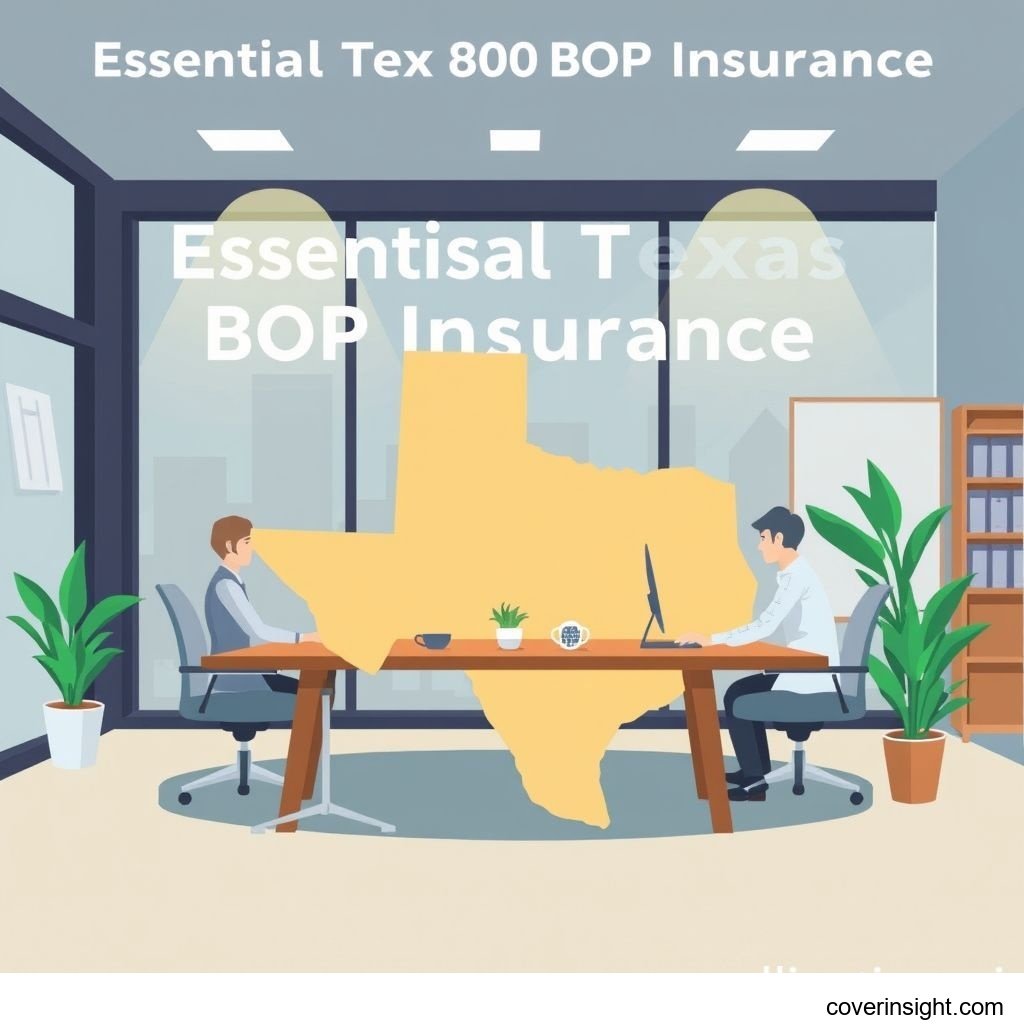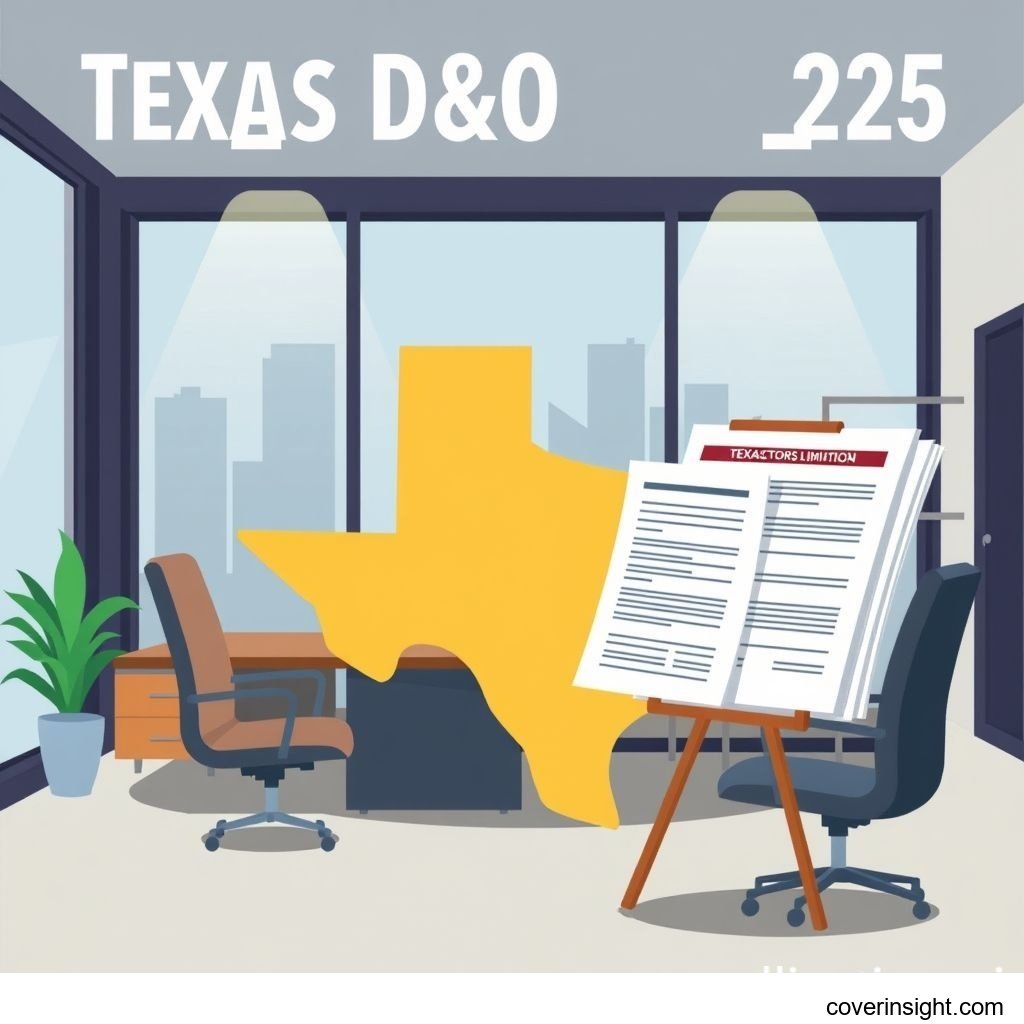Essential Texas BOP Insurance: Guide for 2025
Introduction
Directors and Officers (D&O) coverage stands as a critical shield in the evolving landscape of business liability across the United States. For 2025, its importance continues to grow, particularly for entities of all sizes operating in a dynamic economic hub like Texas. While often discussed in the same breath as other vital business protections, D&O insurance specifically safeguards the personal assets of company leaders – including directors, officers, and sometimes even key employees – against lawsuits alleging wrongful acts in their managerial capacity. It's an indispensable component for any business, offering peace of mind in an increasingly litigious environment.
Coverage Details
Understanding what D&O insurance entails is crucial for any organization, from a burgeoning startup to an established corporation.
What’s Included
Typically, a D&O policy provides protection for a wide array of alleged "wrongful acts." These can include:
-
Breach of Fiduciary Duty: Claims that directors or officers failed to act in the best interest of the company or its shareholders.
-
Mismanagement: Accusations of poor decision-making that led to financial losses or other damages.
-
Misrepresentation: Allegations of misleading statements made in financial reports, prospectuses, or public communications.
-
Employment Practices: While often covered by a separate Employment Practices Liability (EPL) policy, some D&O policies may offer limited coverage for claims like wrongful termination, discrimination, or harassment if specifically related to management decisions.
-
Regulatory Actions: Defense costs and penalties arising from investigations by government bodies like the Securities and Exchange Commission (SEC) or the Texas Department of Insurance.
-
Shareholder Lawsuits: The most common trigger, these lawsuits often allege corporate malfeasance, poor financial performance, or actions that diluted shareholder value.
Imagine a scenario in Texas: A promising tech startup in Austin, "InnovateTex Inc.," faces a lawsuit from a group of disgruntled investors alleging that the board misrepresented the company's financial health during a crucial funding round. Without D&O coverage, the personal assets of InnovateTex's directors and officers would be directly at risk, potentially leading to bankruptcy and personal ruin. This is where D&O steps in, covering legal defense costs and any settlements or judgments, ensuring the leaders can continue to focus on the business, even amidst legal challenges.
Common Exclusions
While comprehensive, D&O policies do have specific exclusions designed to prevent coverage for actions that are outside the scope of good faith errors or omissions. Common exclusions include:
-
Fraudulent or Criminal Acts: Intentional acts of fraud, illegal remuneration, or criminal behavior are almost always excluded. If an officer knowingly commits a crime, the policy will not protect them.
-
Bodily Injury and Property Damage: These claims typically fall under a general liability or commercial property insurance policy, not D&O. For instance, a customer tripping and falling on company premises would not be a D&O claim.
-
Prior Acts: Actions that occurred before a specified retroactive date on the policy, or acts known to the insured before the policy inception, are generally not covered.
-
Professional Services: Claims arising from the rendering or failure to render professional services (e.g., a doctor being sued for malpractice) are covered by professional liability insurance, not D&O.
-
Insolvency: While the D&O policy might cover costs related to the management of a distressed company, it typically won't cover claims directly resulting from the company's insolvency if it’s merely a business failure without a specific "wrongful act" accusation.
Cost Analysis
The premium for Directors and Officers coverage isn't a one-size-fits-all figure. It's influenced by a variety of factors unique to each business.
Price Factors
Several key elements contribute to the overall cost of a D&O policy:
-
Company Size and Revenue: Larger companies with higher revenues generally face greater D&O premiums due to increased complexity and potential for larger claims.
-
Industry: Certain industries, like finance, pharmaceuticals, or high-tech, are inherently more susceptible to D&O claims due to regulatory scrutiny, rapid changes, or intense competition.
-
Claims History: A history of previous D&O claims will undoubtedly lead to higher premiums, as insurers view the organization as a higher risk.
-
Coverage Limits and Deductibles: Higher coverage limits (the maximum amount the policy will pay) will result in higher premiums, while choosing a higher deductible (the amount you pay out-of-pocket before coverage kicks in) can lower the premium.
-
Number of Directors and Officers: More individuals covered generally means a higher risk exposure for the insurer.
-
Financial Stability: Insurers assess the financial health of the company. A struggling company might pose a higher risk of D&O claims related to solvency or mismanagement.
-
Legal Environment (Texas): Texas has a robust legal framework, and while it's business-friendly, the potential for litigation is always present. The sheer number of businesses operating in Texas—over 3 million small businesses alone, according to data often cited by the Texas Economic Development & Tourism Office—means a larger pool of potential D&O claims, which can subtly influence the broader market's pricing.
Saving Tips
While D&O is an essential investment, there are ways to manage its cost:
-
Implement Robust Risk Management: Demonstrating strong corporate governance, clear policies, and regular audits can signal to insurers that your company is well-managed and proactive in mitigating risks.
-
Increase Your Deductible: If your company has sufficient liquid assets, opting for a higher deductible can significantly lower your annual premium.
-
Shop Around: Obtain quotes from multiple reputable insurance providers. The market is competitive, and prices can vary. Leveraging resources like the "National Association of Insurance Commissioners" website can help identify licensed insurers.
-
Bundle Policies (Where Applicable): While D&O is typically a standalone policy, some insurers may offer discounts if you purchase multiple lines of business insurance (like general liability or professional liability) from them.
-
Maintain a Clean Claims History: This goes without saying, but avoiding claims through good governance and compliance is the best way to keep premiums down long-term.
FAQs
You've got questions about D&O coverage, and we've got answers.
-
How much does directors and officers coverage cost?
There's no single answer. Premiums can range from a few thousand dollars annually for small businesses to millions for large, publicly traded corporations. The average small-to-medium sized business might expect to pay anywhere from $5,000 to $20,000 per year, but this is highly variable based on the factors mentioned above.
-
What affects premiums?
Premiums are primarily affected by the company's size, industry, revenue, claims history, the specific coverage limits and deductibles chosen, the number of individuals needing coverage, and the overall economic and legal climate.
-
Is it mandatory?
No, D&O insurance is not legally mandatory for most private companies in the U.S. However, it is often required by investors (especially venture capitalists), lenders, and often seen as a prerequisite for attracting top talent to board positions. It's arguably a practical necessity, even if not legally compelled.
-
How to choose?
Choosing the right D&O policy involves assessing your company's specific risks, understanding the policy's inclusions and exclusions, and comparing quotes from multiple reputable insurers. Work with an experienced insurance broker who understands D&O and your industry. You can also consult "State Insurance Departments" for information on local regulations and licensed providers. For general business insurance needs and various forms of coverage, "US Insurance Home" can be a valuable starting point, and for broader, cross-border insurance questions, exploring "Insurance Resources Global" can provide additional context. For certain broader compliance issues or even information on how management decisions impact employee benefits, general government resources like "Healthcare.gov" might offer tangential information, though it’s not directly related to D&O insurance itself.
-
Consequences of no coverage?
The consequences of operating without D&O coverage can be severe. In the event of a lawsuit alleging wrongful acts, the personal assets of your directors and officers – including their homes, savings, and investments – could be at stake. Legal defense costs alone can be astronomical, potentially bankrupting individuals even if the allegations are ultimately unfounded. Furthermore, the inability to offer D&O protection can make it incredibly difficult to recruit and retain qualified board members and executives, putting your company at a significant disadvantage.
As someone living in Texas and observing the robust business environment here, it’s clear that companies are constantly pushing boundaries, innovating, and growing. This dynamic energy, while exciting, also comes with inherent risks. Based on my experience, navigating the complexities of business in 2025, especially within a highly active legal landscape, requires a proactive approach to risk management. D&O insurance isn't just another line item on a balance sheet; it's a foundational safeguard for the leaders who drive our businesses forward, allowing them to make bold decisions without constant fear of personal financial ruin. It’s truly an investment in leadership stability and long-term business resilience.








Comments